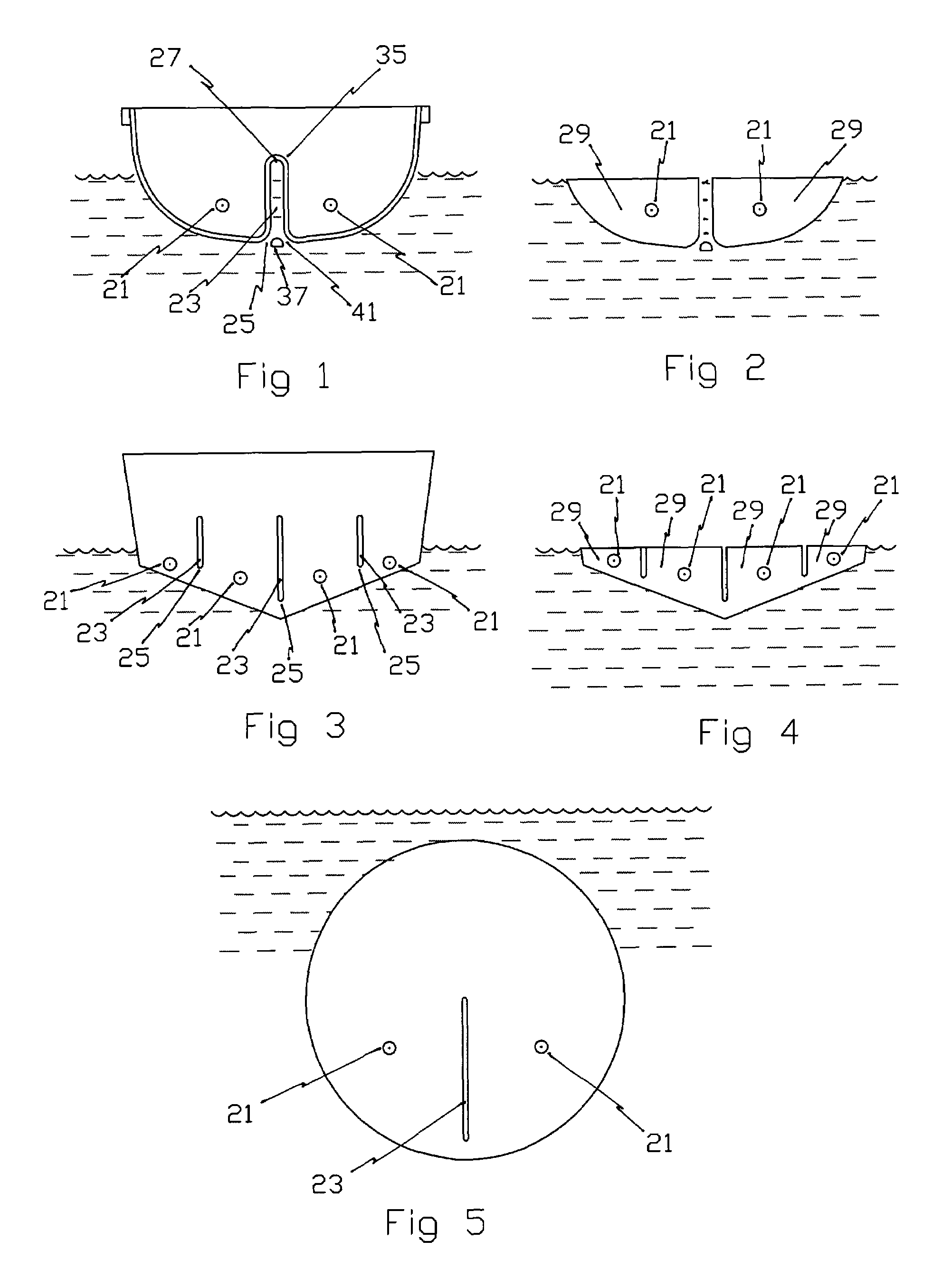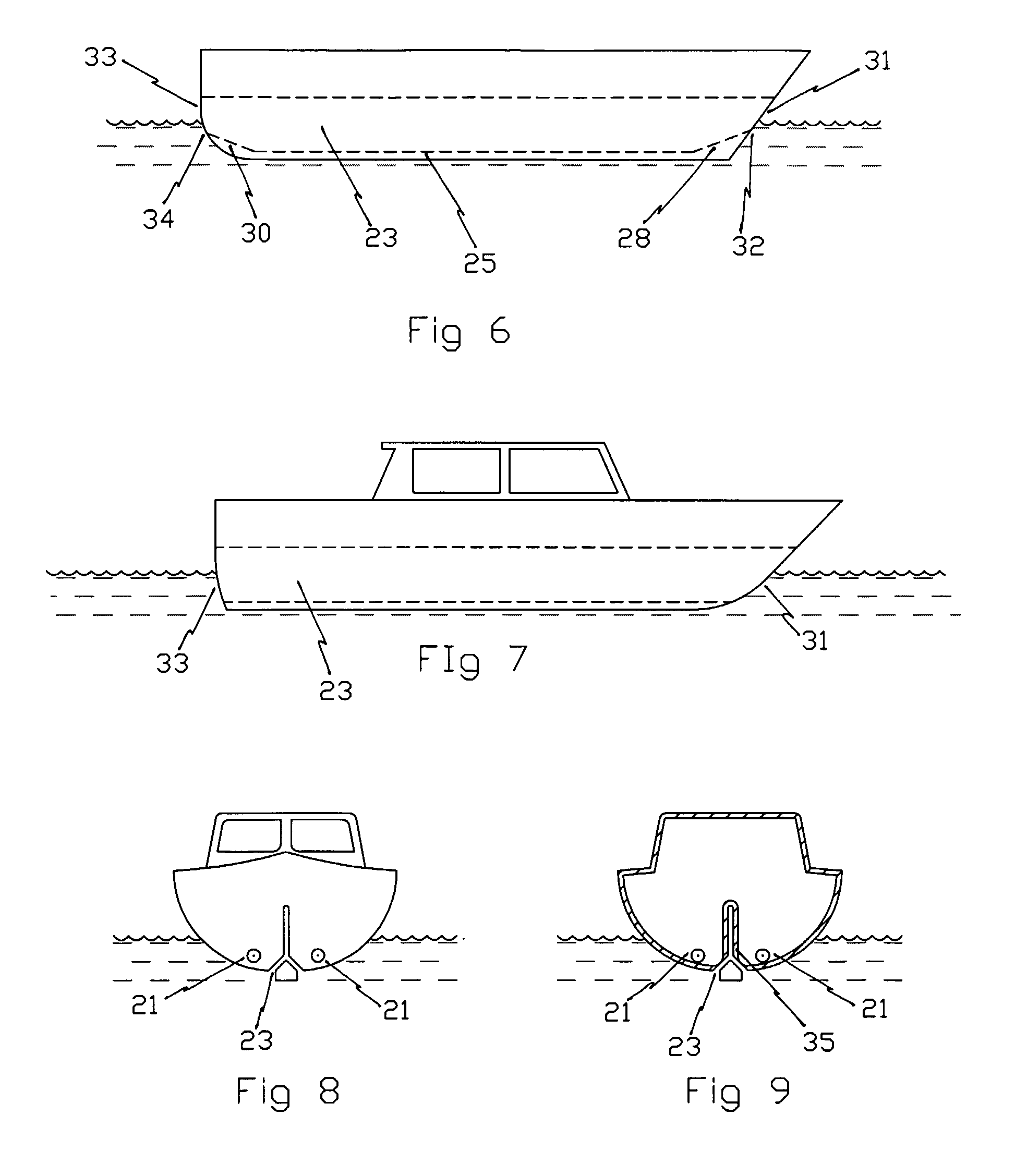Slotted hulls for boats
a technology for boats and hulls, applied in the field of hulls of boats and ships, to achieve the effects of enhancing stability, safety and comfort, and enhancing operation and use experien
- Summary
- Abstract
- Description
- Claims
- Application Information
AI Technical Summary
Benefits of technology
Problems solved by technology
Method used
Image
Examples
Embodiment Construction
[0121]The straightforward simplicity of the functional element—a slot through-along or through-across, a boat hull—provides for utmost simplicity of construction as is illustrated in FIG. 1 of the drawings. Essentially all that is required is a fabricated or molded hollow trunk which would create and enclose the slot. This could quite easily be fabricated by a boat-builder of basic skill and using any of the common boat-building materials: wood / steel / aluminum / composites / etc, or a combination of any of these materials.
[0122]The slot would extend along most or all of the length of the hull and would extend vertically from the lowest practical level within the hull to a top level somewhat above the highest anticipated water-level about the hull.
[0123]The slot would require at least one aperture to its lowest extremity, such aperture(s) of sufficient open-area as to permit the easy ingress of water from beneath the hull.
[0124]The slot would further require at least one aperture venting ...
PUM
 Login to View More
Login to View More Abstract
Description
Claims
Application Information
 Login to View More
Login to View More - R&D
- Intellectual Property
- Life Sciences
- Materials
- Tech Scout
- Unparalleled Data Quality
- Higher Quality Content
- 60% Fewer Hallucinations
Browse by: Latest US Patents, China's latest patents, Technical Efficacy Thesaurus, Application Domain, Technology Topic, Popular Technical Reports.
© 2025 PatSnap. All rights reserved.Legal|Privacy policy|Modern Slavery Act Transparency Statement|Sitemap|About US| Contact US: help@patsnap.com



